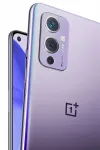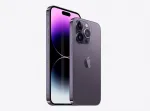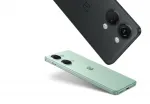The Nokia 101, also known as the Nokia 101, is a versatile and compact device that offers a range of useful features. It is a dual SIM (Mini-SIM, dual stand-by) phone, which means you can have two phone numbers on one device, making it a great choice for those who want to keep work and personal life separate, or for those who travel frequently.
The body of the Nokia 101 is lightweight, weighing only 71 grams (2.50 ounces). It has a sleek and compact design, with dimensions of 110 x 45.5 x 14.9 mm, 73 cc (4.33 x 1.79 x 0.59 in). This makes it easy to carry around and fit into pockets or small bags. The device also features a built-in flashlight, making it convenient for emergencies or when in low light conditions.
In terms of connectivity, the Nokia 101 offers basic features such as a stereo FM radio and a 3.5mm jack for headphones. However, it does not have USB or Bluetooth capabilities, which may limit the device's ability to transfer files or connect to other devices. It also has no WLAN (wireless local area network) or positioning features, so users will have to rely on mobile data or traditional maps for navigation.
The Nokia 101 comes in two color options - Phantom Black and Coral Red. Both colors are vibrant and add a touch of personality to the device. It is also important to note that the SAR EU (specific absorption rate) of the device is 1.28 W/kg (head), which is within the acceptable range for mobile devices.
When it comes to the display, the Nokia 101 has a compact 1.8-inch TFT (thin-film transistor) display with 65K colors. The screen resolution is 128 x 160 pixels, which may seem low compared to modern smartphones, but it still offers a decent level of clarity and sharpness for basic tasks such as texting or calling.
The Nokia 101 does not have a camera, so if photography is a priority for you, this device may not be the best choice. However, it does have a built-in MP3 player, which is perfect for listening to music on the go. This feature may also appeal to those who are looking for a phone without a camera for privacy reasons.
The device runs on the GSM (Global System for Mobile Communications) network technology, which is the standard for 2G networks. This means that it does not support higher-speed data connections such as 3G or 4G, so internet browsing and streaming capabilities may be limited.
In terms of memory, the Nokia 101 has a dedicated microSDHC (microSD high capacity) card slot, which allows for storage expansion of up to 8GB. It also has a phonebook with a capacity of 500 entries and the ability to record calls.
The battery capacity of the Nokia 101 is 1020 mAh, which is relatively small compared to the batteries of modern smartphones. However, it is a removable battery, which means it can easily be replaced if needed. The battery has a standby time of up to 600 hours and a talk time of up to 6 hours and 40 minutes. It also has a music playtime of 26 hours, making it a decent choice for those who enjoy listening to music on their devices.
The Nokia 101 was announced in 2011, August and released in October of the same year. However, it has since been discontinued, meaning it is no longer being produced or sold by the company. This may be an important factor for potential buyers, as replacement parts or support may be difficult to find.
In conclusion, the Nokia 101 is a basic and affordable device that offers a range of features suitable for those who need a phone for essential tasks such as calling, texting, and listening to music. It has a compact design, dual SIM capability, and expandable memory, making it a practical choice for those who value functionality over advanced technology. However, it lacks modern features such as a camera, high-speed internet connectivity, and Bluetooth, so it may not appeal to those who need a more versatile device.









